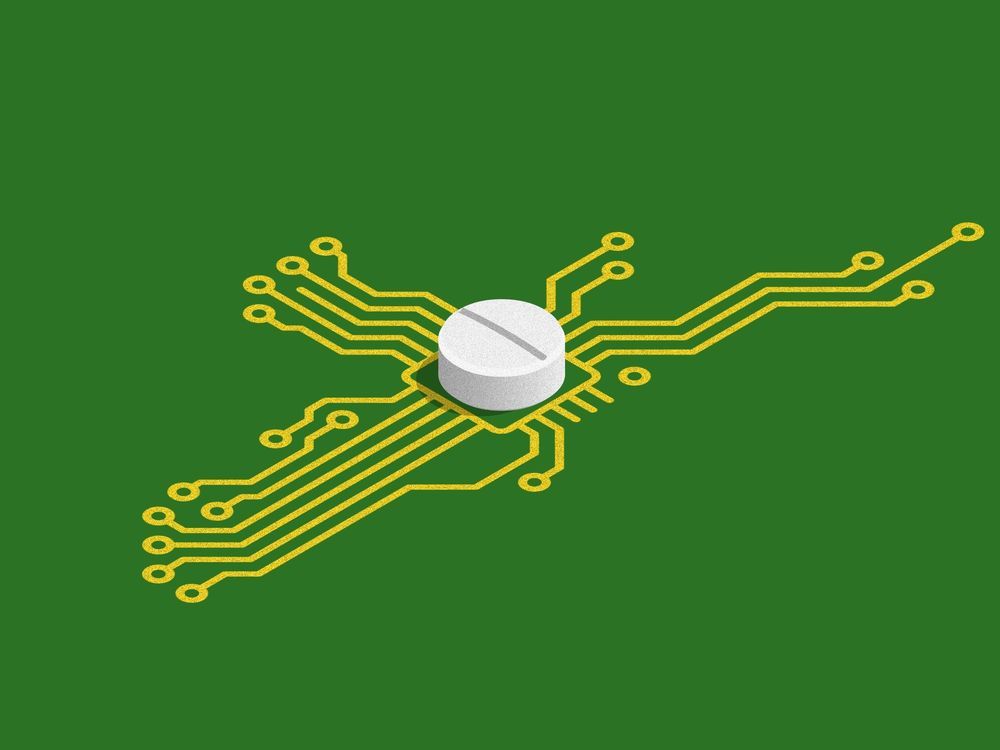Page 8678
Sep 3, 2019
Brain, Liver and Muscle Rejuvenated
Posted by Steve Hill in categories: biotech/medical, life extension, neuroscience
Age-related changes to the signals sent and received by our cells travelling via the bloodstream are one of the hallmarks of aging. A team of researchers, including Drs. Irina and Michael Conboy, has published the results of a new study suggesting that rejuvenation might be achieved by the calibration of these signals found in the blood [1].
The search for rejuvenation
The Conboys had done earlier research in joining of the circulatory systems between young and old animals, a process known as parabiosis, and they showed that tissue aging was not a one-way street and could be rapidly reversed in a matter of weeks, given access to the beneficial signaling from the younger animal [2].
Sep 3, 2019
China Is Quickly Becoming a Space Superpower
Posted by Klaus Baldauf in categories: satellites, surveillance
One firm looking to capitalize is Beijing-based startup i-Space, which is preparing for its third launch in coming weeks. Like most of the $500 million-valued firm’s employees, CEO Jingqi Cai came from China’s state space industry. She sees no limit to what the Chinese commercial space industry can achieve. “I don’t know any country in the world which can do things as fast as in China,” says Cai.
Still, the ability of China’s commercial space firms to compete is curtailed by strict International Traffic in Arms Regulations (ITAR) rules, which prohibit satellites containing American components from being launched by China. In response, China is offering holistic “turnkey” solutions: building U.S. component-free satellites for clients, handling the launch and offering ground station support. Although China’s share of the commercial market remains small at around 5–10%, say analysts, it is growing with launch of communications and surveillance satellites for nations like Brazil, Venezuela, Laos, Nigeria and Algeria. In addition, European satellite manufacturers have begun designing devices labeled as “ITAR-free” for this reason.
The likelihood is that China’s space exploration and commercial programs will advance in tandem. For i-Space chief engineer Yi Wei, launching satellites is simple compared to his previous job designing escape pods for China’s state-run human space program. “In comparison, I feel no pressure here at all,” he says.
Sep 3, 2019
A Molecule Designed By AI Exhibits ‘Druglike’ Qualities
Posted by Derick Lee in categories: biotech/medical, robotics/AI
Why the rush? It now costs $2.6 billion, by one estimate, to get a new drug to market, and pipelines are only getting slower and more expensive. There’s hope—and hype—that AI could help chip away at that figure by reducing the time and labor before a drug starts clinical trials. The idea is that the same techniques used to generate realistic deepfakes and deftly play Go might be able to decipher the complex rules of drug design and generate molecules from scratch.
Insilico Medicine is among several startups trying to harness artificial intelligence to speed to development of drugs.
Sep 2, 2019
‘World’s first space hotel’ revealed with artificial gravity and stunning ‘Earth view’ cabins for 400 astro-tourists
Posted by Klaus Baldauf in categories: futurism, space
DESIGNS for the ‘first space hotel’ have been revealed and it’s as weird and futuristic as you would expect.
The orbiting space station is designed to accommodate 400 guests and has facilities that you find in top hotels such as restaurants, bars and a cinema.
The commercial space hotel has been designed by The Gateway Foundation.
Sep 2, 2019
The bizarre logic of the many-worlds theory
Posted by Saúl Morales Rodriguéz in category: futurism
Sep 2, 2019
A method to simulate strongly correlated phases of quantum gauge theories
Posted by Saúl Morales Rodriguéz in categories: mathematics, particle physics, quantum physics
Quantum gauge theories are mathematical constructs that are typically used by physicists to describe subatomic particles, their associated wave fields and the interactions between them. The dynamics outlined by these theories are difficult to compute, yet effectively emulating them in the lab could lead to valuable new insight and discoveries.
In a recent study, a team of researchers at ETH Zurich’s Institute for Quantum Electronics successfully implemented a fundamental ingredient for the simulation of quantum gauge theories in a laboratory experiment. Their hope is that by simulating quantum systems in a highly controlled environment, they will gather interesting observations and broaden their understanding of many-body systems (i.e., systems with many particles that interact with each other).
“Usually, our work is inspired by phenomena in solid state physics such as strongly correlated phases of electrons in complex materials,” Tilman Esslinger, one of the researchers who carried out the study, told Phys.org. “In our current work, however, we wanted to extend the scope of our experimental platform (i.e., ultracold atoms in optical lattices) in order to investigate a new set of phenomena occurring in high-energy and condensed matter physics. The objective was to demonstrate that it is possible to engineer gauge fields in our setup that are dynamical quantum degrees of freedom due to their coupling to a matter field.”
Sep 2, 2019
A new alphabet to write and read quantum messages with very fast particles
Posted by Saúl Morales Rodriguéz in categories: particle physics, quantum physics
Quantum information relies on the possibility of writing messages in a quantum particle and reading them out in a reliable way. If, however, the particle is relativistic, meaning that it moves with velocities close to the speed of light, it is impossible for standard techniques to decode the message unambiguously, and the communication therefore fails.
Thanks to the introduction of a new method, researchers at the University of Vienna and the Austrian Academy of Sciences have developed reliable decoding of quantum messages transmitted at extremely high speeds. The results, published in the journal Physical Review Letters, opens up new possibilities of technological applications in quantum information and quantum communication.
Imagine the following situation: Anna and Bill want to exchange a message by using a property of a quantum particle, say the spin of an electron, which is an intrinsic form of particle’s rotation. Bill needs Anna’s message as quickly as possible, so Anna has to send the electron at maximum speed, very close to the speed of light. Given that Anna has the electron in her laboratory localized, the Heisenberg uncertainty principle forbids the velocity of the electron to be defined with arbitrary precision. When the electron travels at extremely high speed, the interplay between special relativity and quantum physics causes the spin and the velocity of the electron to become entangled. Due to this correlation, which is stronger than what is classically possible, Bill is not able to read out the spin with the standard method. Can Anna and Bill improve their communication strategy?
Sep 2, 2019
Quantum gravity’s tangled time
Posted by Saúl Morales Rodriguéz in category: quantum physics
The theories of quantum mechanics and gravity are notorious for being incompatible, despite the efforts of scores of physicists over the past fifty years. However, recently an international team of researchers led by physicists from the University of Vienna, the Austrian Academy of Sciences as well as the University of Queensland (AUS) and the Stevens Institute of Technology (U.S.) have combined the key elements of the two theories describing the flow of time and discovered that temporal order between events can exhibit genuine quantum features.
According to general relativity, the presence of a massive object slows down the flow of time. This means that a clock placed close to a massive object will run slower as compared to an identical one that is further away.
However, the rules of quantum theory allow for any object to be prepared in a superposition state. A superposition state of two locations is different to placing an object in one or the other location randomly—it is another way for an object to exist, allowed by the laws of quantum physics.
Sep 2, 2019
Black Engineer Invents Gloves That Turn Sign Language into Audible Speech
Posted by Marcia Wiegand in categories: electronics, mobile phones
Shouldn’t the title just be “Engineer”? What an amazing product!
Roy Allela, a 25-year old engineer and inventor from Kenya, has found the ultimate solution to bridging the communication barrier between deaf and hearing people. He has invented the Sign-IO gloves that can translate signed hand movements to audible speech so deaf people can “talk” even to those who don’t understand sign language.
The Sign-IO gloves feature sensors mounted on each of the five fingers to determine its movements, including how much a finger is bent. The gloves are connected via Bluetooth to an Android app that Allela also invented which uses a text-to-speech function to convert the gestures to vocal speech.
Continue reading “Black Engineer Invents Gloves That Turn Sign Language into Audible Speech” »


















